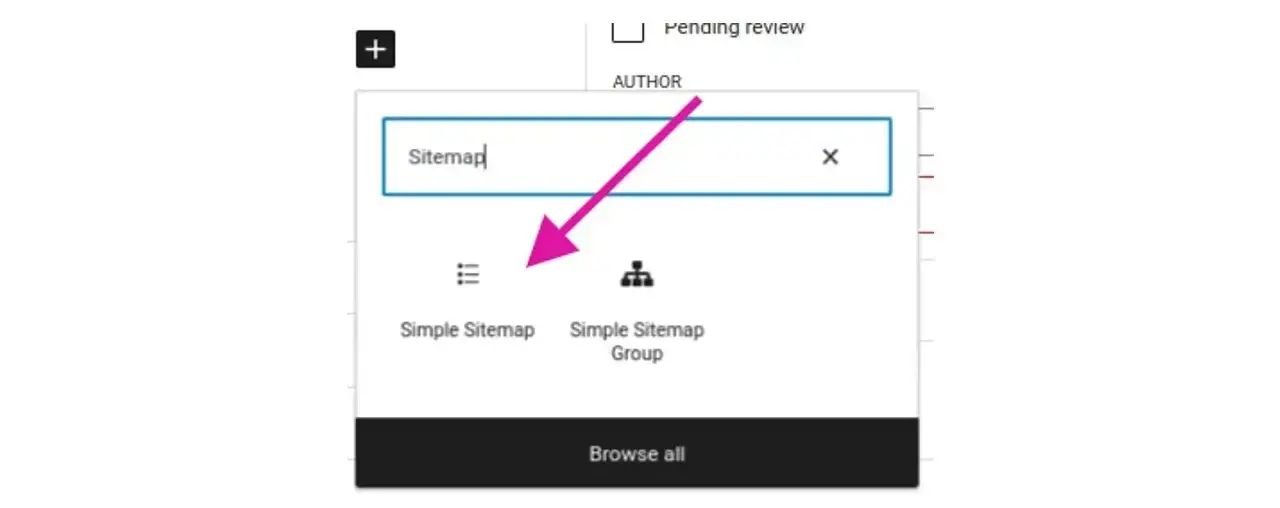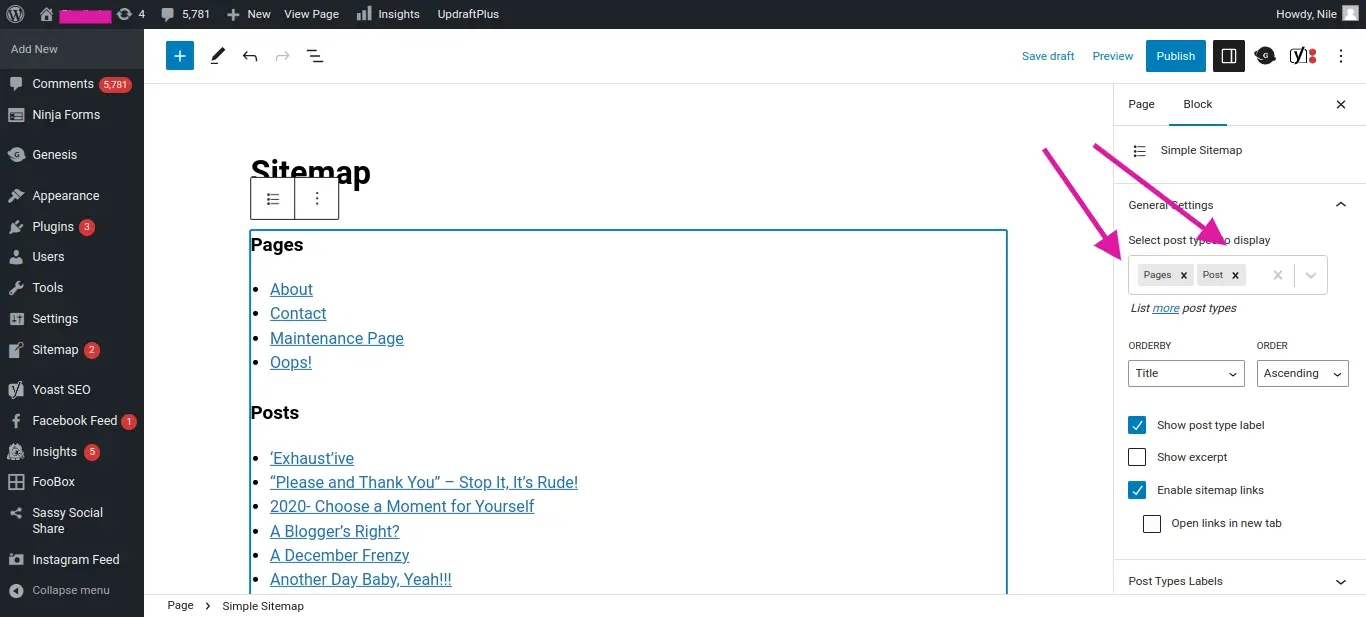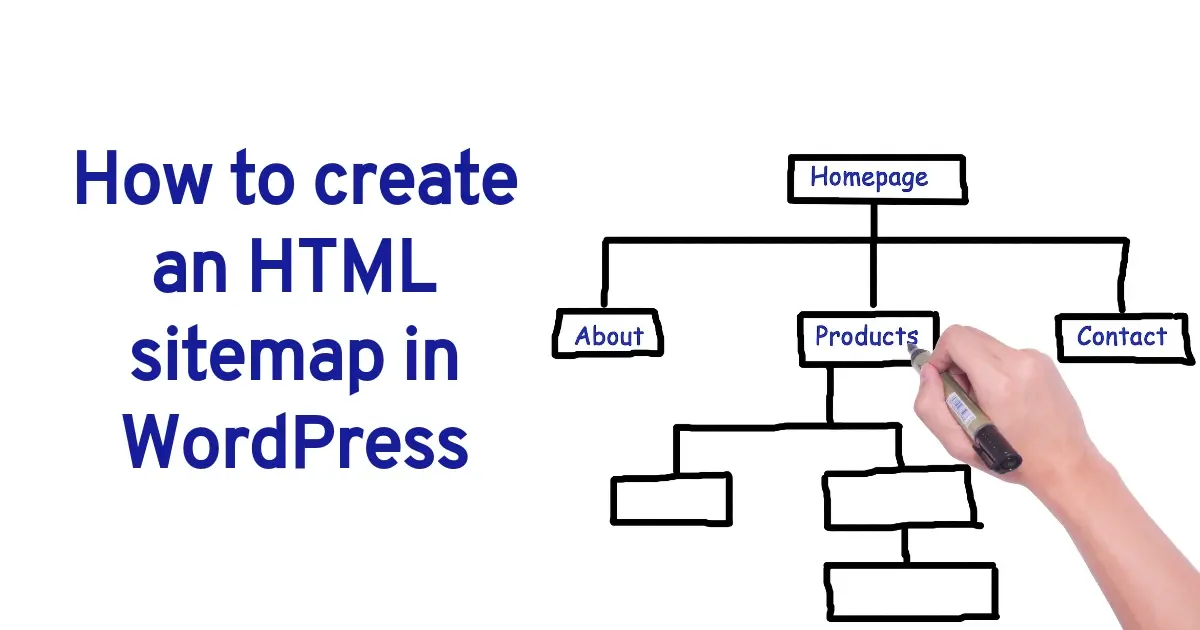You might’ve heard that you need a sitemap for your site and wonder what it is. Sitemaps can help search engines and your website’s users. In this article you’ll learn about sitemaps, why you need one, and even how to create an HTML sitemap in WordPress.
What is a Sitemap?
A sitemap is a file that lists all the pages on a website, including their URLs, metadata, and other information. Sitemaps are typically formatted in XML or HTML, and they can be submitted to search engines to help them crawl and index the pages on a website more efficiently.
Sitemaps are designed to provide a complete overview of a website's structure and content, making it easier for search engines to understand and index the content. They can also help users navigate a website more easily, as they provide a clear and organized overview of all the pages on the website.
Why Does Your Website Need a Sitemap?
Sitemaps are important for several reasons. Here are some of the main benefits of having a sitemap:
- Search engines can crawl and index you more efficiently.
- Better user experience.
- You can easily pinpoint errors.
Search engines can crawl and index you more efficiently
A sitemap helps give the search engines a more complete summary of your site. Google relies on following the links, and your sitemap is a bunch of links that are organized by how you’ve set up your site. This means if you've added blog posts under certain categories and tags, or if you’ve added sub-pages under main pages. Because search engines like Google can crawl and index your site more thoroughly, you could see improved search rankings.
Better user experience
Sitemaps help users easily get around a website, because they give an organized summary of all the pages on the website.
You can easily pinpoint errors
A good sitemap can help point out errors on a website, for example, broken links or pages that might need to be created. You can also use the sitemap to improve your website’s navigation for the user, so they won’t get lost.
Types of Sitemaps
Before learning on how to create an HTML sitemap in WordPress, you need to know there’s a couple types:
- XML
- HTML
XML
XML is short for Extensible Markup Language, and is used to organize, store, and transport data across different platforms and applications. Fundamentally, XML is a set of rules for encoding documents in a format that can be read by both humans and machines. It uses a series of tags, attributes, and values to explain the content and organization of data in a way that can be easily understood by both people and computers. These tags and attributes in XML are defined in a document type definition or XML schema, which specifies the rules for how the data should be structured.
A key benefit of XML is its versatility. As it’s designed to be self-explaining and highly customizable, XML can be used for a wide variety of data types, which includes text, images, video, and more. XML can also be easily added with other web technologies like CSS, JavaScript, and XSLT to create web applications that people can engage with.
In terms of XML sitemaps, this is more of a sitemap that is geared for search engines to pick up and crawl the website. In fact, you need a XML formatted sitemap to submit to Google Search Console. The benefit of doing this let’s Google know when something is new on your website.
HTML
HTML is short for Hypertext Markup Language, and is the standard markup language when creating web pages and online digital documents. It was created in 1989 by Tim Berners-Lee, a British computer scientist who also invented the World Wide Web. HTML basically is a set of rules and syntax for creating documents that a web browser can decipher and show to the user.
The popular markup language uses a series of tags and attributes to define the organization and content of a document, such as headings, paragraphs, images, links, and more. These tags, or HTML tags are enclosed in angle brackets and can be nested inside each other to create more complex structures. For example, the head of a web page starts with
and ends with .A great benefit of using HTML is being able to create hyperlinks, or links you can click that go from one page to another, whether it's within the same site or to another website. You can also use HTML to embed images, videos, and audio files, into web pages.
An HTML formatted sitemap is great for users. This allows them to see all of your pages and relationship to each other. This is a great alternative in case they can’t find something in your navigation or while using the site’s search feature.
Are Both XML and HTML Sitemaps Necessary to Create in WordPress?
The answer to this question is yes. Here are some reasons for it:
- Accessibility
- Improved user experience
- More SEO-friendly
Both of these together benefit your SEO because you’re wanting to make sure your visitors don’t get lost on your website, and to let the search engines know all of the pages and posts as well as their relationship to each other.
How to Create an HTML Sitemap in WordPress
Some SEO plugins like All In One SEO Pack include an option to create an HTML sitemap in WordPress, however, if you use Yoast SEO, which doesn’t have this feature, you can use the Simple Sitemap plugin. What this plugin does is allow you to use the Gutenberg content block editor. Please note that Yoast SEO does provide a XML sitemap, which is why the Simple Sitemap plugin would also be needed.
Here are the instructions on how to create an HTML sitemap in WordPress using Simple Sitemap:
- Install Simple Sitemap
- Create a page called Sitemap
- Add Simple Sitemap content block
- Add any other wording to the page using paragraph content block (optional)
Install Simple Sitemap
Install the Simple Sitemap plugin in your WordPress admin by going to the Plugins menu item and then clicking on Add New. After installing, make sure to activate the plugin.
Create a page called Sitemap
Go to your Pages section and create a page named Sitemap.
Add Simple Sitemap content block
Edit the sitemap page and search for the Simple Sitemap content block. It looks like the following image:

By default it will list the pages.

On the right hand side of the block editor, there’s an option to add other types of content to this block. You can add posts, pages and even custom post types.
Add any other wording to the page using paragraph content block (optional)
If you want to add a little text to help explain what the page is about, you can add more content than just the sitemap.
Just make sure to link your sitemap somewhere at least in the footer of your website or anywhere you believe that would be an easy way to find it. It wouldn’t make sense to just have a sitemap and not make it easy to get to.
In Summary
Hopefully this article has explained well on what is a sitemap and its benefits for your website. Now that you know more about it, check your site to see if you do have any type of sitemap. If not, it’s time to create an HTML sitemap in WordPress, and then a XML one. Thankfully both can be done without you fooling with code, and just installing a couple plugins.
If you're ready to enhance your website's structure, explore our HTML hosting. With easy-to-use tools and top-notch performance, our hosting solutions simplify the process of managing sitemaps and other essential web tasks.
Frequently Asked Questions
Is WordPress free?
All you need to do to use WordPress is to invest in a web hosting plan since the software itself is free.
Why choose Verpex for WordPress?
As the leading CMS out there, we’ve made it our mission to offer the most comprehensive and streamlined WordPress solutions on the market. Backed by a responsive customer care team and reliable site enhancement tools, we ensure our users get the full WordPress value and support for a reasonable price.
Is a WordPress blog free?
Anyone can download, use, customize, and edit the WordPress code as long as they release it under the GNU General Public License (GPL). Even though the software is free, you can end up paying for things like premium support and hosting.
Can I use WordPress with any hosting
WordPress can generally be used with most hosting providers, as long as the hosting meets the minimum requirements for running WordPress.

Nile Flores is a long time professional blogger, as well as WordPress website designer and developer from the St. Louis Metro East. Nile blogs at NileFlores.com, where she’s passionate about helping website owners, whether they’re small business owners or bloggers. She teaches about Blogging, Social Media, Search Engine Optimization, Website Design, and WordPress. Additionally, Nile loves to speak at WordCamps (WordPress conferences) across the United States. When Nile isn’t knee-deep in coding, she’s a proud mom of a college student, and enjoys oil painting, cigar smoking, nail art design, and practicing traditional Okinawan kempo karate.
View all posts by Nile Flores




















